Mahabalipuram- Monolithic Temples – The Five Rathas
In school. I had studied about the monolothic temples and often as kids, we had played hide and seek in these caves. Today, the perspective had altered completely .
A tribute to the Pandavas of the Mahabharath , the Pallavas have built five Rathas or chariots out of just a single boulder. The Rathas are called Dharmaraja ratha (Yudhistrar), Bheema, Arjuna, Sahadeva -Nakula and their spouse , Draupadi .
The ASI site says that the monolithic temples are called locally as Ratha (Chariot) as they resemble the processional chariots of a temple. Temples of different plan and elevation have been carved and the left over portions were intelligently used to carve animals in a natural way. The architecture style is said to be Dravidian in nature , while Buddhist styles and designs are also visible .
These monolith temples were carved during the reign of King Mahendravarman I and his son Narasimhavarman I. Gods, mortals and animals are sculpted on these temples as some of them are three storied like the Dharamaraja ratha and single storied like Draupadi ratha.
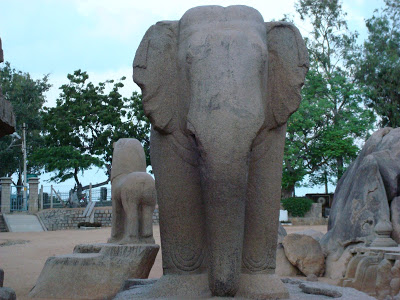
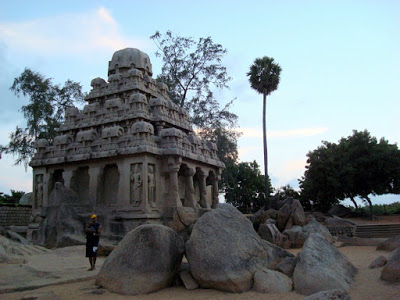
The richest in terms of art is the Dharmaraja ratha . Simple forms of Siva, Harihara, Brahma are some of the Gods depicted here . A portrait of a king, possibly Narasimhavarman I himself above which his titles Sri Megha and Trailokiya – vardhana-vidhi are inscribed. To quote ASI site again – “the upper floors, a veritable gallery of images, have excellently modelled images of Siva as Gangadara, the earliest representation of Siva as Natesa in the Tamil country, Vrishbantika, Kankalamurti, Vishnu resting on Garuda, and Kaliyamardhana. ”
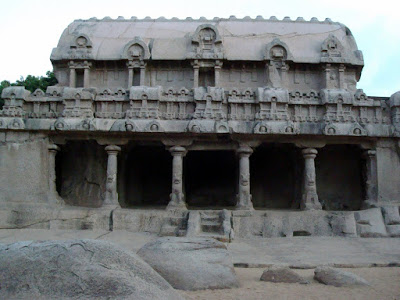
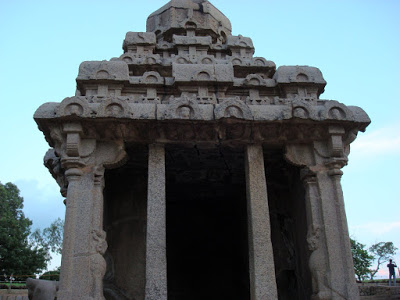
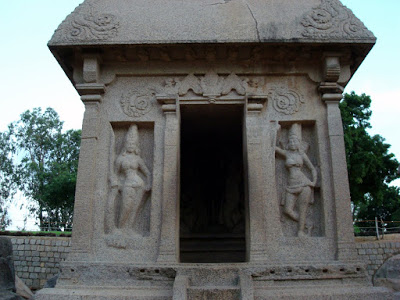
The Bhima Ratha is more oblong in shape and the shrine is probably dedicated to the reclining Vishnu, The Arjuna Ratha carved out of a single rock and has several sculptures – Siva and Skanda among other Gods. The Draupadi Ratha is more like a simple hut and here you can find the presiding deity to be Durga. The Sahadeva-Nakula Ratha is near Arjuna ratha and the other Rathas here are Ganesha Ratha and Pidari Rathas.

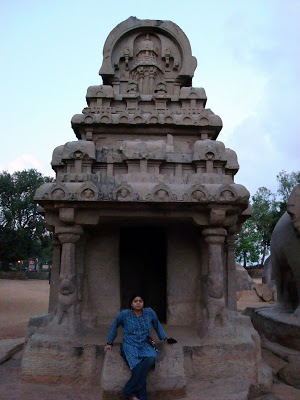
The setting sun did not allow me to go beyond the rathas. The watchman soon drove us away as we went to Arjuna Penance . I could not take pictures as the light was failing and it would not be fair to display the architectural genius in such poor light .
It is interesting to note that post tsunami in 2004 , excavations have shown some carvings and sculptures under water and the ASI is working on the premise that there was probably a city under water . Underwater excavations are going on at various sites near by and Punjeri, a small hamlet across the backwaters is now suggested as the port town with the lighthouse close by
For more details, you can read http://www.ias.ac.in/currsci/may102004/1231.pdf ,
http://www.nio.org/past_events/archaeology/session_I.jsp or the ASI site http://asi.nic.in/asi_monu_whs_mahabalipuram.asp.
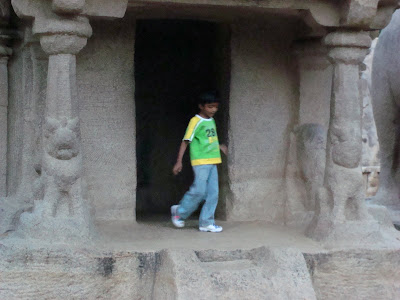
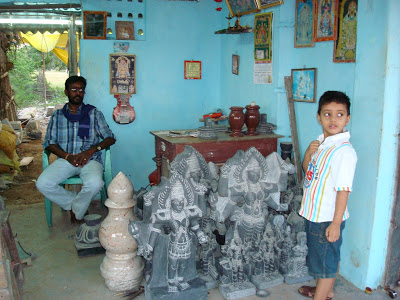
To quote from one of the papers written on the website of National institute of Ocenography by Sundaresh*, A.S. Gaur, S. Tripati and K.H. Vora,
“According to the local traditions these structures are the remains of temple as there were 5 temples believed to be submerged out of 7 and the shore temple is the last surviving one located on the shore at Mahabalipuram. The earliest possible date of these structures could be around 1500 years BP, as the temple architecture has flourished during the Pallava period. The backwaters at Mahabalipuram, on the western bank of Buckingham canal probably served as a port at Punjeri during early centuries of the Christian era. The major and important factor affecting Mahabalipuram cost is erosion. A recent study suggested that the rate of coastal erosion in and around Mahabalipuram could be as high as 55 cm per year. Therefore cause of the submergence of these structures is probably severe coastal erosion. ”
As we drove back , a light from the old light house steered us back into the present and its a still a testimony to the old town thats probably under water , swept away by an earlier tsunami or sea erosion or..
Getting there – Mahabalipuram is about 60 .kms from Madras and you can reach by driving through ECR or OMR. Buses are available as well from Chennai / Madras. There are five star hotels, resorts to shacks and for further details , visit www.mahabalipuram.co.in . The best time to visit will be December-January as the festival usually takes place around this time of the year

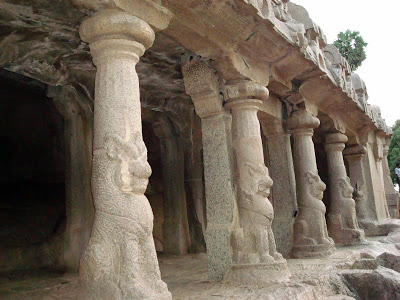
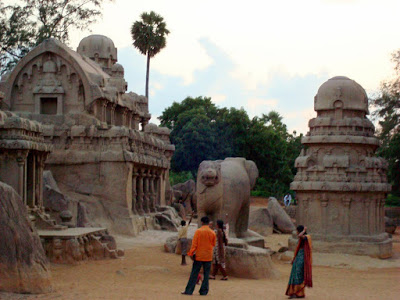
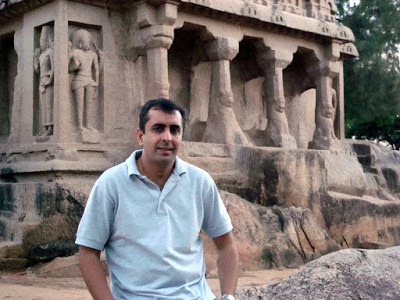
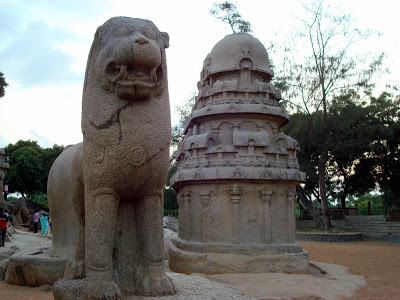
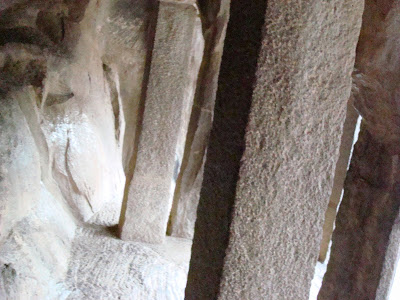
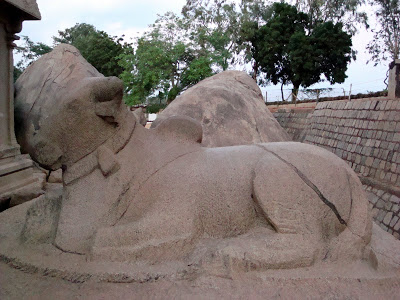
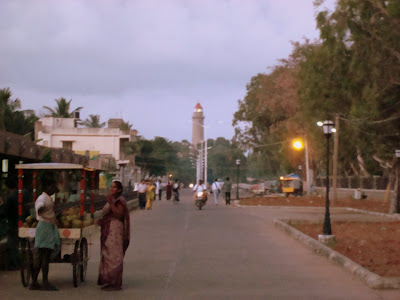
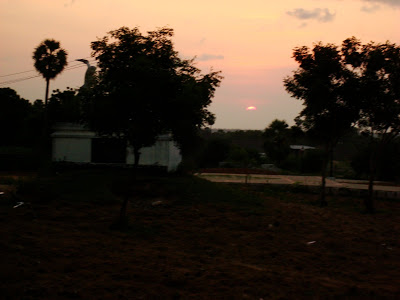
I have some sort of fascination with rock structures, rock music and rock anything;) The lion in the first picture looks similar to the SE Asian kinds, maybe there is some cultural influences:)
don’t I often find you when you are in process of completing the post 😉
same here ..history and monuments are one of my key interests and so I enjoy reading more about them..i believe there is an influence ..I read in one of the web sites..will post that sometime..
You know, the internet connection was weak and I just didnt have patience -so I had stopped posting midway ..I think you are always one of the first who catches me in the act of blogging 🙂
hey Backpacker 🙂 nice trip I guess, more interesting were the sculpture found underneath.. thanks for sharing your trip…
see ya around..
No more monologues?
This is an amazing post. I was always fascinated by the monolothic temples of South and your wonderfully captured shots vividly portray proper image of Mohabalipuram.
Merry Christmas and Have a nice time, Njoy.
Lovely pictures and a great insight about the rathas!
Nice pics! A good informative post about the place.
I am – Thanks ..Just posted on monologues. Wish you a very happy new year
Pijush – I wish I knew more about these monuments..they continue to fascinate me.Thanks. Wish you a very happy new year .
Reeta -Thanks. Ive shared whatever little I knew. Wish you a very happy new year
Alok – Welcome to backpakker and wish you a very happy new year .Thanks for your comment
After reading Patrick’s account on Mahabalipuram and your comment there, I could not stop myself from looking at your blog.
As ever lakshmi, its a pleasure to go through accounts written by you.
Keep on writing.
I am so glad I came across your blog – it’s such an enriching experience to read about the wonders that India is. The rock-cut architecture has always impressed me – the wonders of creating massive structures in stone… Look forward to reading more accounts from you.
At last, I found your post again. You have few [url=http://tipswift.com]useful tips[/url] for my school project. This time, I won’t forget to bookmark it. 🙂